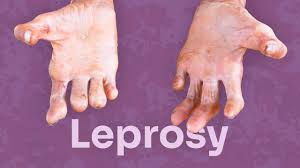
India Aims for Zero Leprosy Transmission by 2027 Under Strengthened National Programme
India’s fight against leprosy has gained significant momentum with the implementation of the National Leprosy Eradication Programme (NLEP), a centrally sponsored initiative under the National Health Mission (NHM). The programme allocates funds to states and union territories based on their specific implementation plans, ensuring that resources are utilized efficiently according to local needs and priorities.
The country achieved leprosy elimination status at the national level in 2005, reducing its prevalence rate to less than one case per 10,000 people. Building on this success, the Government of India launched the National Strategic Plan (NSP) and Roadmap for Leprosy (2023-2027) on January 30, 2023. This ambitious initiative aims to achieve zero transmission of the disease by 2027—three years ahead of the Sustainable Development Goal (SDG) target of 2030.
A key focus of the programme is early detection and active surveillance. The Leprosy Case Detection Campaign (LCDC) has been deployed across rural and urban areas, engaging Accredited Social Health Activists (ASHAs) and frontline workers to identify cases at an early stage. This proactive approach helps prevent the development of severe disabilities, particularly Grade II Disabilities associated with untreated leprosy.
In a move to integrate leprosy screening with broader public health initiatives, the government has incorporated screenings into the Rashtriya Bal Swasthya Karyakram (RBSK) and Rashtriya Kishore Swasthya Karyakram (RKSK), targeting children aged 0-18 years. Additionally, leprosy screenings are now included in the comprehensive primary healthcare services under the Ayushman Bharat Yojana, extending preventive efforts to individuals over 30 years of age.
To curb the spread of infection, the programme has intensified contact tracing efforts. Post-Exposure Prophylaxis (PEP) is being administered to those in close contact with confirmed cases, breaking the chain of transmission. Meanwhile, various disability prevention and medical rehabilitation services are being provided to affected individuals. These include reaction management, distribution of Microcellular Rubber (MCR) footwear, assistive devices, and self-care kits to improve the quality of life for those living with leprosy-related disabilities.
For patients requiring surgical intervention, reconstructive surgeries (RCS) are being conducted at district hospitals, medical colleges, and central leprosy institutes. The government has also introduced a welfare allowance of ₹12,000 for each patient undergoing such procedures, helping to alleviate the financial burden of treatment.
With these targeted interventions and a structured roadmap, India is reinforcing its commitment to completely eliminating leprosy transmission and ensuring better healthcare access for affected communities. The strategic approach not only aims to control the disease but also to reduce stigma and improve rehabilitation outcomes for those affected.